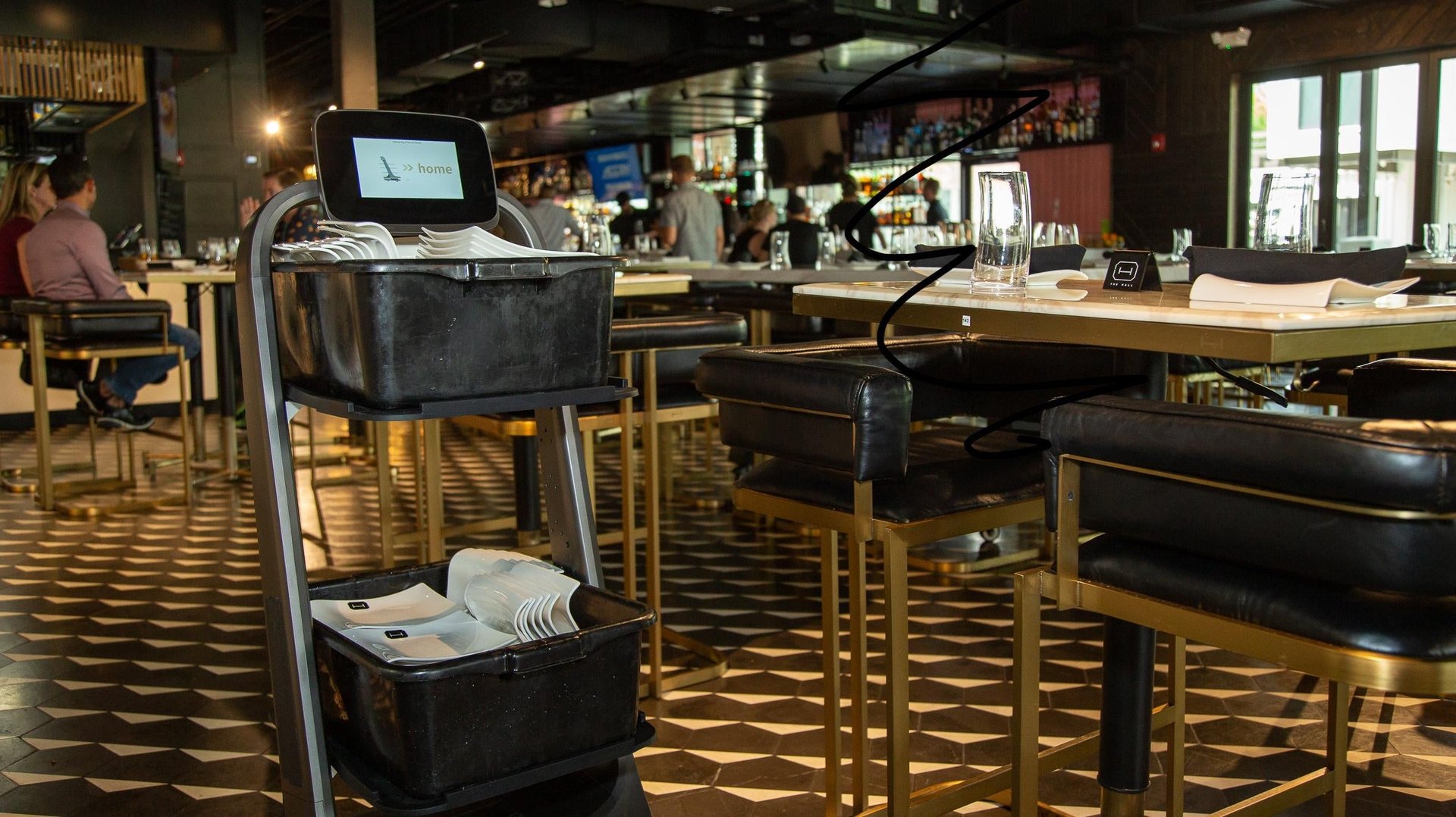Can SoftBank convince more restaurants to use robots?
SoftBank Robotics America is deploying autonomous serving and cleaning robots to restaurants, as the industry faces a labor shortage

SoftBank’s vision is one filled with more robots.
The Japanese conglomerate has made a string of investments in robotics companies from cleaning to warehouses in the few years. Now it wants to bring robots to restaurants, which are facing a shortage of human workers.
SoftBank Robotics America, a subsidiary of SoftBank, has partnered with Gausium, a Chinese robotics startup, to expand its autonomous cleaning and service robots to the US. With the purpose of automating certain tasks, the Scrubber 50 Pro can scrub, sweep, dust, mop, and sanitize. The XI robot, which is equipped with three serving trays that hold up to 66 pounds altogether, can serve several tables at a time. Currently, a fleet of XI robots is being used in a 12,250-square-foot full-service food hall outfitted with nine restaurants in Orlando, Florida, according to the company.
The partnership comes as restaurants have been investing more in technology due to being short-staffed during the pandemic, whether that’s in the back of the house cooking fries or the front of the house delivering food to customers’ tables.
Robots as a solution to the labor shortage
In 2016, SoftBank Robotics America was launched to find a way to combine customer service with robotics. The company manufactured Pepper, a human-looking robot, which served as a receptionist in stores and offices. But the popularity of Pepper fizzled out, and the production of Pepper was halted in 2020. (SoftBank Robotics said it has sold that side of the business.) After that, SoftBank Robotics turned to commercial cleaning, which was facing its own labor shortage, and partnered with Brain, a company that makes software for autonomous mobile robots in 2017 to scale-up cleaning robots.
There are parts of jobs people don’t want to do, and that’s what robots are built for, said Brady Watkins, the president of SoftBank Robotics America. And unlike needing to interact directly with customers as was the case with Pepper, certain tasks in restaurants are consistent and can be automated away, such as delivering dishes from point A to point B.
Restaurants are unsure about robots
But some restaurants see robots as a solution in search of a problem. “The problem is very clear, there is a labor shortage that’s happening, but we’re stuck on what the right solution is,” said Watkins. Part of the problem is that restaurants are not fully aware of what robots can do. For instance, most businesses don’t realize that robots can immediately do the work on the first day, compared to human employees, Watkins said.
XI or Scrubber Pro 50 are also pricey investments, costing as much as the typical yearly salary of one to two restaurant employees, said Watkins. But they can help free-up workers, allowing them to spend more time interacting with customers, which can increase the restaurant’s overall check size by 5 to 10%, he said.
How do people feel about seeing robots?
While robots can come off looking dystopian or disconcerting, SoftBank Robotics may have landed on a natural fit for robots. With XI or Scrubber 50 Pro, “what is really happening is people when you see a robot, you actually now recognize and appreciate the task that it’s doing where before maybe you didn’t,” said Watkins. He explained that customers see this as the business investing in a high-tech solution to making a restaurant cleaner, for instance. In many cases they’re not all that different from the robots that automatically vacuum many Americans’ homes.
The pandemic has fueled investor interest in robotics firms, as the service industry faces a shortage of workers. Robotics companies in the US have brought in $30 billion in funding in 2021, up from $21 billion last year, according to PitchBook data.
The latest partnership comes as SoftBank faces financial troubles, having exited companies like Uber and OpenDoor, an online real estate company, to raise cash amid the steep investment losses.